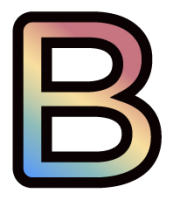Face Recognition with Face Masks
When the COVID-19 pandemic began, people started to wash their hands frequently and wear face masks, actions they had not normally done before. Suddenly, you couldn’t unlock your iPhone using your face anymore – the phone didn’t recognize you when you were wearing a face mask. Why not? The question leads to some interesting concepts about computer-based face recognition technology and how it differs from human face recognition.
Are these two photographs of the same person?
People are so good at recognizing faces that we don’t even think of it as something we do. We know some people and we don’t know other people and we don’t think much about how we know. Human vision is amazingly complex and humans can recognize the faces of people they know well from any angle and with only a tiny amount of data. If I took a photo of the face of someone you know well, I could tear it in half or in thirds and you likely would still recognize the person. Computers have a hard time with that task. On the other hand, people aren’t very good at recognizing strangers. In one study, cashiers (who knew they were being evaluated) matched the wrong person to a photo 50% of the time. They also rejected 7% of the correct photos. Recognizing faces is a tiring task, while computers can compare millions of faces in seconds.
So, what happens when you add a face mask? At a high level, face recognition technology has two parts. In enrollment, you take a photo of your face and it is converted into something like a bar code. In identification, the system takes a second photo, converts it into the bar code and looks for a matching bar code in the database of enrolled users. If you cover half of your face, you are losing a lot of data that goes into that bar code. This is going to cause a reduction in accuracy.
In July 2020, US National Institute of Standards and Technology (NIST) evaluated face recognition algorithms to see how they performed with faces partially obscured by face masks. They found errors rates ranging between 5% to 50%. Within months of the COVID-19 pandemic lockdown, Apple released an iOS update that enabled it to work with face masks. Several biometric vendors have already adapted their biometric facial recognition algorithms to accommodate the wearing of face masks. One vendor. Rank One Computing, has released an algorithm that does "periocular recognition" which uses only the part of the face around the eyes and forehead. The new algorithm has been bench-marked to their face recognition algorithm and surprisingly there isn’t a significant reduction in performance when you focus on the eyes.
The public is now (mostly) accustomed to wearing face masks, paying close attention to everything they touch and washing their hands often. It’s clear that expectations for hygiene have changed, and it will not be “business as usual” after COVID-19. As we emerge from quarantine, how do we attend live events while keeping ourselves and others safe?
Contactless entry has many advantages over traditional methods of access control, such as wristbands, paper tickets or mobile tickets. You can control access to your venue while maintaining a safe social distance between employee and guest. Moreover, because contactless entry uses biometric face recognition, access can’t be shared, and fraud is reduced. It’s also a faster and more pleasant way to enter a venue. This video demonstrates how it works:
Do you have a use case you're interested in exploring? Our contactless entry system identifies and admits people at walking speed while preserving individual privacy. If you've been considering our identity solution for your organization, please reach out and book a consultation today.


